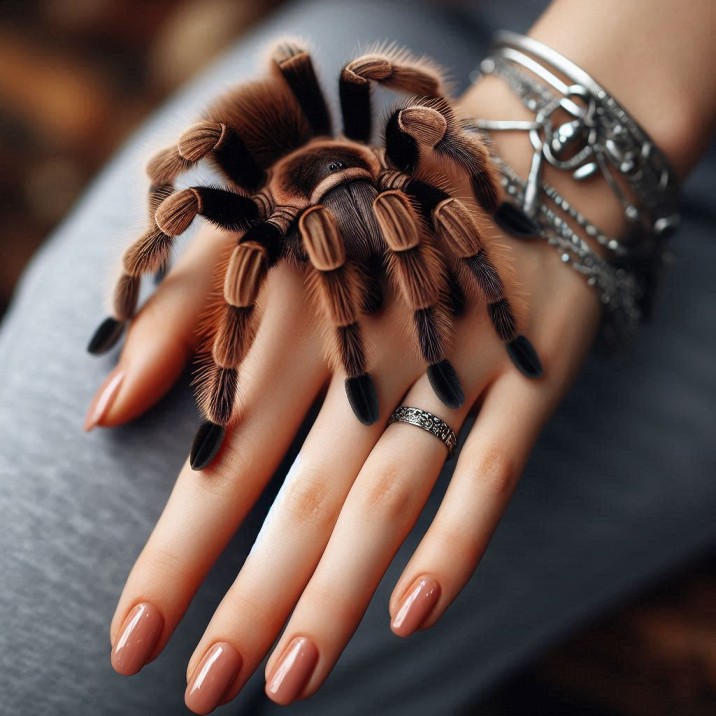Table of Contents
Table of Contents
- Introduction
- Understanding Tarantula Behavior
- What is a Tarantula?
- Tarantula Behavior: Friend or Foe?
- Defensive Nature
- Do Tarantulas like Humans
- Can Tarantulas Recognize Humans?
- Do Tarantulas Show Affection?
- Handling Tarantulas: Do They Mind?
- Tarantula Care and Human Interaction
- Creating a Safe Environment
- Feeding and Diet
- Common Myths About Tarantulas
- Table of Information
- Conclusion
- FAQs About Do Tarantulas like humans
Introduction
When it comes to tarantulas, many people experience a mix of fear and fascination. These large, hairy spiders are often misunderstood, leading to numerous questions about their behavior and relationship with humans. One common question is: “Do tarantulas like humans?” This article will delve into the world of tarantulas, exploring their behavior, preferences, and how they interact with us.
By the end of this article, you’ll have a better understanding of these intriguing creatures and might even find them less frightening and more fascinating!

Understanding Tarantula Behavior
What is a Tarantula?
Tarantulas are a type of spider belonging to the Theraphosidae family. They are known for their large size and hairy bodies. These spiders are found in various parts of the world, including the Americas, Africa, Asia, and Europe. They thrive in warm climates, often inhabiting burrows or under rocks and logs.
Key Characteristics of Tarantulas:
- Large, robust bodies covered with hair.
- Eight legs and two pedipalps for handling prey.
- Venomous fangs used for hunting and defense.
- Diverse colors and patterns, some of which are quite striking.
Tarantula Behavior: Friend or Foe?
Tarantulas are generally solitary creatures. They spend most of their lives alone, except during the mating season. These spiders are not naturally aggressive toward humans and will usually try to avoid contact. Their primary interest is in hunting for food and finding shelter.
Defensive Nature
Tarantulas have a variety of defense mechanisms:
- Urticating Hairs: Some species can flick hairs from their abdomen that can irritate the skin and eyes of predators.
- Venom: While tarantula venom is not deadly to humans, it can cause discomfort and allergic reactions.
- Threat Postures: Tarantulas may raise their front legs and display their fangs when threatened.
Do Tarantulas Have Emotions?
One of the biggest misconceptions about tarantulas is that they can experience emotions like love or affection. Unlike mammals, tarantulas do not have the complex brain structures required to feel emotions. Their behaviors are driven by instinct rather than any form of attachment or preference for humans.
Do Tarantulas like Humans
Can Tarantulas Recognize Humans?
Tarantulas do not recognize individual humans. They lack the cognitive ability to form such memories or attachments. Their interactions with humans are purely based on instinct and survival needs.
Do Tarantulas Show Affection?
Tarantulas do not show affection in the way mammals do. They are not capable of forming emotional bonds with humans or other animals. While they may tolerate handling and appear calm, this is simply because they do not perceive the handler as a threat.
Handling Tarantulas: Do They Mind?
Many tarantula owners enjoy handling their pets, but it is essential to understand that this is more for the human’s benefit than the spider’s. Tarantulas do not seek out or enjoy being handled. While they might tolerate it, excessive handling can stress them out.
Handling Tips:
- Always handle your tarantula gently and minimally.
- Avoid squeezing or dropping them, as their exoskeletons are fragile.
- Ensure your hands are clean to avoid transferring harmful substances.
Tarantula Care and Human Interaction
Creating a Safe Environment
Tarantula owners should create a habitat that mimics the spider’s natural environment. This includes providing a proper substrate, hiding places, and a stable temperature and humidity level.
Feeding and Diet
Tarantulas are carnivorous and typically eat insects, such as crickets, mealworms, and roaches. Some larger species may also consume small vertebrates like mice. It’s essential to feed them a balanced diet and avoid overfeeding.
Common Myths About Tarantulas
Myth 1: Tarantulas Are Deadly
Tarantula bites are rarely fatal to humans. While their venom can cause discomfort, it is not potent enough to kill a human.
Myth 2: Tarantulas Are Aggressive
Tarantulas are more defensive than aggressive. They prefer to avoid confrontation and will only bite if they feel threatened.
Myth 3: Tarantulas Are Dirty
Tarantulas are actually quite clean animals. They groom themselves regularly and keep their burrows tidy.
Table of Information
| Aspect | Details |
|---|---|
| Habitat | Burrows, under rocks, in trees |
| Diet | Insects, small vertebrates |
| Lifespan | Up to 30 years in captivity |
| Defense Mechanisms | Urticating hairs, venom, threat postures |
| Common Misconceptions | Deadly, aggressive, dirty |
Conclusion
While tarantulas are fascinating and often misunderstood creatures, they do not possess the capacity to like or form bonds with humans. Their behavior is guided by instinct, and their interactions with us are primarily driven by survival needs. By understanding these spiders better, we can learn to appreciate their role in the ecosystem and care for them responsibly as pets.
FAQs About Do Tarantulas like humans
1. Can tarantulas recognize their owners?
No, tarantulas cannot recognize individual humans. Their interactions are based on instinct.
2. Do tarantulas enjoy being handled?
Tarantulas do not enjoy handling, but they might tolerate it if done gently.
3. Are tarantula bites dangerous to humans?
Tarantula bites are rarely dangerous to humans. Their venom is not strong enough to be fatal.
4. How do tarantulas defend themselves?
Tarantulas use urticating hairs, venom, and threat postures to defend themselves.
5. What should I feed my pet tarantula?
Feed your tarantula a diet of insects like crickets and mealworms.

